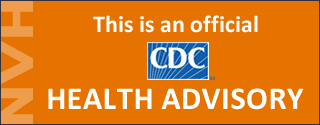Archive for the ‘Environment’ Category
Climate-related disasters: Looking at the numbers
Monday, December 9th, 2019
Let’s look at the numbers
| 30 Y | The number of climate-related disasters has tripled in 30 years. By the 2030s, large parts of Southern, Eastern and the Horn of Africa and South and East Asia will experience greater exposure to droughts, floods and tropical storms. |
| 20 M | On average, over 20 million people a year were internally displaced by extreme weather disasters over the last 10 years. Eighty percent of those displaced live in Asia – home to over a third of the world’s poorest people. |
| 10 % | The richest 10 percent of people in the world produce around half of global emissions. The poorest half of the world’s population – 3.5 billion people – is responsible for just 10 percent of carbon emissions. |
| 100 | Just 100 companies are responsible for close to three quarters of global emissions (71 percent) and spend millions lobbying against climate action. |
| 700 $ | Between 2008 and 2018, 18 African countries have collectively suffered an annual loss of over 700$ million from climate-related disasters. |
Chronic Mountain Sickness in Peru
Tuesday, September 17th, 2019Science
“…La Rinconada….the world’s highest human settlement, a gold-mining boomtown at 5100 meters in southeastern Peru. An estimated 50,000 to 70,000 people live here, trying to make it—and, many hope, strike it rich—under brutal conditions. La Rinconada has no running water, no sewage system, and no garbage removal. It is heavily contaminated with mercury, which is used to extract the gold. Work in the unregulated mines is back-breaking and dangerous. Alcohol abuse, prostitution, and violence are common. Freezing temperatures and intense ultraviolet radiation add to the hardships.
La Rinconada’s most defining feature, however, the one that lured the scientists, is its thin air. Every breath you take here contains half as much oxygen as at sea level. The constant oxygen deprivation can cause a syndrome called chronic mountain sickness (CMS), whose hallmark is an excessive proliferation of red blood cells. Symptoms include dizziness, headaches, ringing ears, sleep problems, breathlessness, palpitations, fatigue, and cyanosis, which turns lips, gums, and hands purplish blue. In the long run, CMS can lead to heart failure and death. The condition has no cure except resettling at a lower altitude—although some of the damage may be permanent…….”
Costa Rica: Going “Green”
Friday, March 15th, 2019“……Costa Rica’s green bid, though fraught with challenges, has a head start. Electricity comes largely from renewable sources already — chiefly hydropower, but also wind, solar and geothermal energy. The country has doubled its forest cover in the last 30 years, after decades of deforestation, so that half of its land surface is now covered with trees. ……”
Bangkok cracks the list of the top 10 cities with the foulest air on the planet.
Thursday, January 31st, 2019“……Bangkok suffers from a toxic amalgam: unchecked industrialization and urbanization, a car-crazy populace and lax regulation. The burning of fallow fields and a dry season with little wind exacerbate the crisis...…”
Air Pollution: The top 20 worst cities
Wednesday, November 7th, 2018CDC: After Hurricane Florence—Clinical Guidance for Carbon Monoxide Poisoning
Tuesday, September 18th, 2018CDC Health Alert Network (HAN) Health Advisory: Hurricane Florence—Clinical Guidance for Carbon Monoxide (CO) Poisoning
Centers for Disease Control and Prevention (CDC) sent this bulletin at 09/16/2018 02:56 PM EDT
| CDC issued the following Health Alert Network (HAN) Health Advisory on September 16, 2018. You are receiving this information because you subscribe to COCA email updates. If a colleague forwarded this email to you, yet you would like to receive future updates directly from COCA, click here.
If you have any questions about this or other clinical issues, please e-mail coca@cdc.gov On behalf of the Clinician Outreach and Communication Activity (COCA) |
|||||
|
Global Drowning: 3.72 million drown annually in the world
Tuesday, May 22nd, 2018“…..WHO in its latest report on drowning reported that 3,72,000 people die every year worldwide due to drowning. 90 per cent of these deaths takes place in LMIC’s (Low and middle income countries). It is a major contributor towards mortality rates in south east Asia……”




